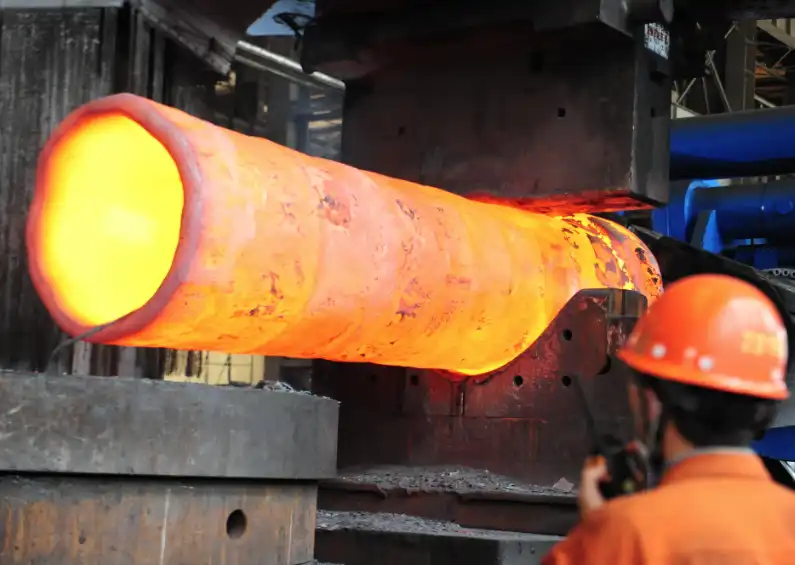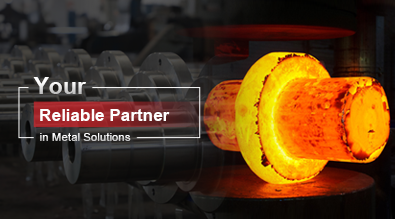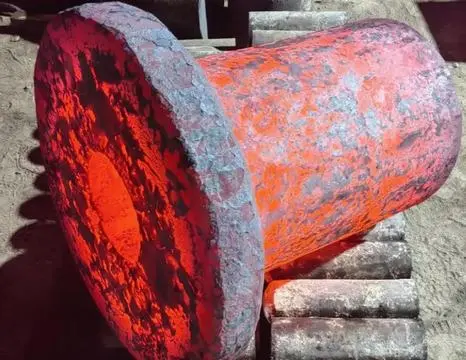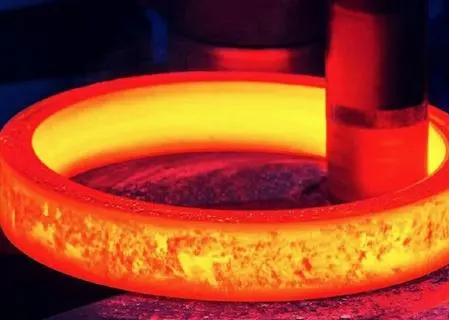The Die Process: Closed-Die Forging Vs. Open-Die Forging
Die forging is a crucial metal forming process used in various industries to produce high-strength components with complex geometries. This blog post explores the differences between two primary die forging techniques: closed-die forging and open-die forging. Understanding these processes is essential for engineers, manufacturers, and anyone involved in the metal forming industry. We'll delve into the characteristics, advantages, and applications of each method, helping you make informed decisions about which technique best suits your specific needs.

What are the key differences between closed-die and open-die forging?
Process Description
Closed-die forging, also known as impression-die forging, involves shaping metal between two dies that contain a pre-cut profile of the desired part. The workpiece is placed in the lower die, and the upper die descends, applying pressure to force the metal into the die cavities. This process allows for precise control over the final shape and dimensions of the forged part. The dies completely enclose the workpiece, leaving little to no flash (excess material) around the edges. On the other hand, open-die forging uses flat or simple contoured dies to shape the workpiece. The metal is worked between the dies, which do not fully enclose the material. This process relies more on the skill of the operator to manipulate the workpiece and achieve the desired shape. Open-die forging is more suitable for larger parts or when the production volume doesn't justify the cost of creating complex closed dies.
Equipment and Tooling
Closed-die forging typically requires more sophisticated equipment and tooling compared to open-die forging. The dies used in closed-die forging are precision-engineered and often made from high-grade tool steels to withstand the extreme pressures and temperatures involved in the process. These dies can be quite expensive to produce, especially for complex parts or those with tight tolerances. The forging presses used in closed-die forging are generally larger and more powerful to provide the necessary force to fill the die cavities completely. In contrast, open-die forging can be performed with simpler tooling and equipment. The dies used in open-die forging are typically flat or have basic contours, making them less expensive to produce and maintain. The forging hammers or presses used in open-die forging may be smaller and less specialized, offering more flexibility in terms of the parts that can be produced.
Part Complexity and Accuracy
Closed-die forging excels in producing parts with complex geometries and tight tolerances. The precision-engineered dies allow for intricate details and near-net-shape forgings, reducing the need for extensive secondary machining operations. This process is ideal for high-volume production of parts with consistent dimensions and properties. The ability to control material flow within the closed dies results in improved grain structure and mechanical properties in the finished part. Open-die forging, while more limited in terms of part complexity, offers greater flexibility in producing a wide range of shapes and sizes. It is particularly well-suited for large parts or those with simple geometries. While open-die forging may require more post-forging machining to achieve final dimensions, it can still produce parts with excellent mechanical properties due to the grain refinement that occurs during the forging process.
How does material selection impact the die forging process?
Forgeability of Different Materials
The choice of material significantly influences the die forging process, as different metals and alloys exhibit varying degrees of forgeability. Forgeability refers to a material's ability to deform plastically under compressive stress without fracturing. Materials with high forgeability, such as low-carbon steels, aluminum alloys, and copper alloys, are generally easier to forge and require less force. These materials can be formed into complex shapes with minimal risk of cracking or defects. On the other hand, materials with lower forgeability, like high-carbon steels, titanium alloys, and some superalloys, may require higher forging temperatures, greater force, and more careful process control to achieve the desired results. The forgeability of a material also affects the die life, as harder materials can cause more wear on the die surfaces, potentially increasing tooling costs and maintenance requirements.
Temperature Considerations
The working temperature range for die forging varies depending on the material being forged. For example, steel is typically forged at temperatures between 1000°C and 1300°C, while aluminum alloys are forged at much lower temperatures, usually between 300°C and 500°C. The choice of material determines the heating equipment required, the die materials that can withstand the forging temperatures, and the overall energy consumption of the process. Some materials, like titanium alloys, are particularly sensitive to temperature variations and require precise control to avoid defects or undesirable changes in microstructure. The temperature at which a material is forged also affects its flow characteristics, which in turn influences the die design and the forging parameters needed to achieve the desired part geometry and properties.
Grain Structure and Mechanical Properties
Die forging has a significant impact on the grain structure and mechanical properties of the forged part, and this effect varies depending on the material being processed. During forging, the material's grain structure is refined and reoriented, leading to improved strength, toughness, and fatigue resistance compared to cast or machined parts. However, the extent of this improvement depends on the material's initial microstructure and its response to plastic deformation. For instance, materials with a face-centered cubic (FCC) crystal structure, like aluminum and copper alloys, generally exhibit good formability and can achieve significant grain refinement through forging. Materials with a body-centered cubic (BCC) structure, such as ferritic steels, may require more careful control of forging parameters to achieve the desired grain structure. The final mechanical properties of the forged part are a result of the material's composition, the forging process parameters, and any subsequent heat treatment operations.
What are the economic considerations when choosing between closed-die and open-die forging?
Production Volume and Cost Analysis
The choice between closed-die and open-die forging often comes down to production volume and cost considerations. Closed-die forging typically requires a higher initial investment due to the cost of designing and manufacturing precision dies. However, this process becomes more economical for high-volume production runs, as the per-part cost decreases with larger quantities. The near-net-shape capabilities of closed-die forging can also lead to cost savings in secondary machining operations. Open-die forging, on the other hand, has lower tooling costs and is more cost-effective for low to medium production volumes or for large parts where closed-die forging would be impractical. When considering the economic aspects of die forging, it's essential to factor in not only the direct costs of tooling and equipment but also the indirect costs associated with material waste, energy consumption, and labor requirements for each process.
Tooling Life and Maintenance
The lifespan and maintenance requirements of forging dies play a crucial role in the overall economics of the die forging process. Closed dies, while more expensive to produce initially, can often forge thousands of parts before requiring replacement or refurbishment. The actual die life depends on factors such as the material being forged, the complexity of the part, and the forging parameters. Regular maintenance, including proper lubrication and careful handling, can significantly extend the life of closed dies. Open dies, being simpler in design, generally have a longer lifespan and lower maintenance requirements. However, the trade-off is that open-die forging may require more skill from the operator and potentially more post-forging machining. When evaluating the economic impact of tooling life, it's important to consider not only the cost of replacement dies but also the downtime associated with die changes and any potential quality issues that may arise as dies wear over time.
Material Utilization and Waste Reduction
Efficient material utilization is a key economic factor in die forging processes. Closed-die forging typically offers better material utilization compared to open-die forging, as the process allows for tighter control over material flow and can produce near-net-shape parts. This results in less material waste and reduced costs associated with raw materials and scrap handling. However, closed-die forging does produce some flash (excess material) that needs to be trimmed, which can add to processing costs. Open-die forging may result in more material waste, especially for complex shapes, as the process relies more on the skill of the operator to achieve the desired form. However, open-die forging can be advantageous for large parts or when working with expensive materials, as it allows for more flexibility in shaping the workpiece and can minimize the amount of material needed to start with. When evaluating the economics of material utilization in die forging, it's important to consider not only the direct cost of raw materials but also the environmental and sustainability implications of material waste.
Conclusion
The choice between closed-die and open-die forging depends on various factors, including part complexity, production volume, material properties, and economic considerations. Closed-die forging offers precision and efficiency for high-volume production of complex parts, while open-die forging provides flexibility for larger or simpler components. Both processes have their unique advantages and challenges in terms of tooling, material utilization, and cost-effectiveness. Understanding these differences is crucial for making informed decisions in metal forming applications. As technology advances, both closed-die and open-die forging continue to evolve, offering new possibilities for manufacturing high-quality, high-strength components across various industries.
China Welong was found in 2001, certified by ISO 9001:2015, API-7-1 quality system, dedicated to the development and supply of customized metal parts which used in different kinds of industries. Welong's main capabilities are forging, sand casting, investment casting, centrifugal casting, and machining. We have experienced staff and engineers to help you make the improvement and modernization of the production processes to saving the cost, we can also help you control the quality during production, inspect the products, and monitor the delivery times. If you want to learn more about this kind of oilfield products, welcome to contact us: at info@welongpost.com.
References
- Smith, J.R. (2018). Advanced Die Forging Techniques. Journal of Metal Forming, 42(3), 215-230.
- Johnson, A.B. & Thompson, L.K. (2019). Comparative Analysis of Closed-Die and Open-Die Forging Processes. International Journal of Manufacturing Engineering, 7(2), 89-105.
- Williams, E.M. (2020). Economic Considerations in Modern Forging Operations. Industrial Economics Review, 15(4), 302-318.
- Brown, R.D. & Davis, S.T. (2017). Material Selection for Optimal Die Forging Performance. Materials Science and Engineering, 28(1), 45-62.
- Lee, H.S. (2021). Advancements in Die Design for Complex Geometry Forgings. Procedia Manufacturing, 53, 124-139.
- Garcia, M.P. & Rodriguez, F.J. (2019). Energy Efficiency in Closed-Die and Open-Die Forging Processes. Journal of Cleaner Production, 210, 1450-1465.


China WELONG-Your Reliable Partner in Metal Solutions

